Stinner Frameworks Builds Great American Bikes Again
The Story Behind the Bike Fabricator Who Made an International Brand
When Jane Faulkner, a UCSB librarian and former competitive cyclist, bought her first bike from Goleta-based Stinner Frameworks — one of the first made for a paying customer — she was supporting her local builder. By the time she bought her third, she was supporting an internationally recognized brand. This became evident to her last summer as she and her husband, Kim Bleth, sipped coffee at a café in the popular road cycling destination of Girona, Spain, and a group of admirers began to crowd around her bike. It turned out those oglers were from Singapore, where their shop had just begun selling Stinner bikes.
The burgeoning success of Stinner Frameworks was something I had noticed closer to home. As I began to see more and more of their machines invading Santa Barbara trails and roads, I couldn’t help but wonder what accounted for the company’s popularity.
Sure, I’d heard superlatives about the bikes from owners, but there are plenty of talented bicycle fabricators who never make the leap from part-time hobbyist to full-time business operator.
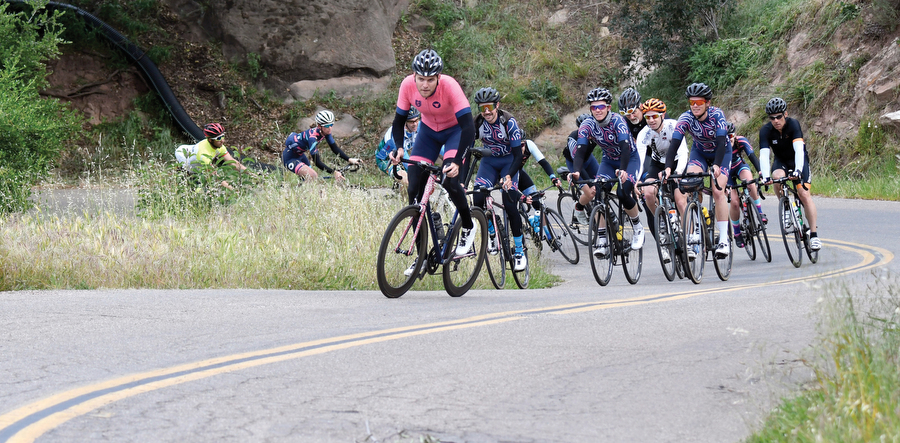
Eponymous proprietor Aaron Stinner is the real deal. He may not be replacing all the jobs that Carrier is outsourcing to Mexico, but, along with selling beautiful bicycles, he has created six manufacturing positions in a location that struggles to support a middle class. Over several months, I spent time getting to know the business while trying to divine the answer to one overarching question: How did Aaron Stinner navigate the transition from artisan to entrepreneur?
There are concrete answers to this question. They have to do with manufacturing and branding and marketing, but the best place to start this story might be with Stinner himself.
Survival of the Fittest
When I caught up with him, he was descending Mountain Drive all alone amid an attenuated string of cyclists, floating in a fog of his own cogitations, idly zigzagging down the breeze toward the Santa Barbara Mission. We were on a social bike ride hosted by Stinner Frameworks, a marketing event ostensibly celebrating the final stage of the 2016 Tour de France. As Stinner coasted along, however, there was little to indicate that he was the face behind this shindig.
“I try to keep myself out of the center of attention,” Stinner told me as I pulled beside him. A lanky man who towers past six feet tall and is thinner than a sail — when he’s not wearing Lycra, his rolled-up skinny jeans search for precarious purchase on his backside — Stinner looks the part of the high-level racer he once was. He possesses a panther-like ease suggestive of a ferocious reserve of energy that flashes to the surface at opportune moments.
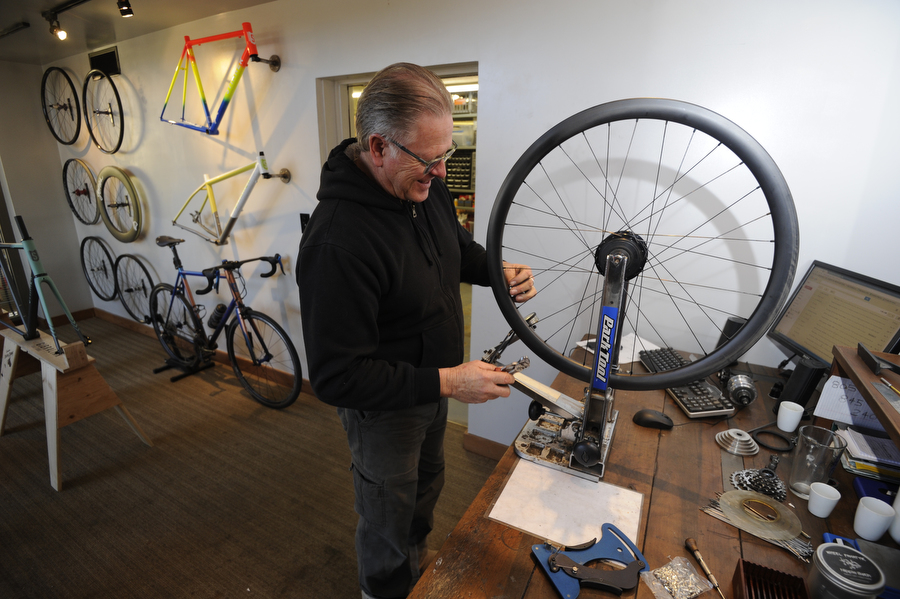
After a “tough” move from Santa Rosa to Goleta in the 10th grade, Stinner dedicated all his free time to training. He joined the Santa Barbara–based Echelon junior team and continued racing internationally for his old Northern California team, Swift. He eventually put in some time with the U.S. Under 23 team and contemplated going pro upon graduating from Dos Pueblos High School but at the last minute decided to attend UCSB, where he majored in biopsychology and raced for the cycling club.
As we reached the bottom of the foothills and pedaled toward downtown, he said with much understatement, “I guess I take that competitiveness I had as a racer, and now I put it into my business.” When he decided to go all in on bicycle fabrication and needed space for a shop, for instance, Stinner convinced his parents to help him with the down payment on a house. Then, to pay the mortgage, he rented out every room and lived in the garage with his machine tools.
Such single-mindedness seemed reminiscent of the incredible drive it takes to reach the pinnacle of an endurance sport like cycling, where the most grueling moments of training yield the most marginal — but most difference-making — results.
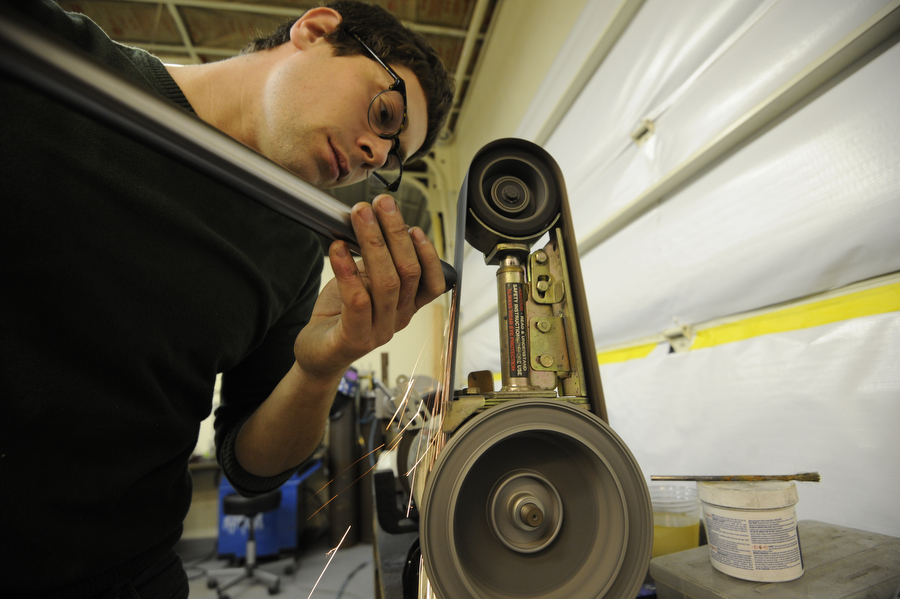
To say that Stinner Frameworks is the culmination of an individual’s determination, however, would be as wrong as it would be cliché. Perhaps Stinner’s greatest strength is the one he exhibited at the Tour de France event: a willingness to sit back and assess his own limitations.
Lean and Mean
By 2014, Stinner had been fabricating frames for four years, and he was about to throw in the towel.
On the surface, everything looked great. After taking a frame-building course at the United Bicycle Institute in 2010 and continuing to practice on his own, Stinner decided he was ready to start selling frames in 2011. The next year, he won best rookie builder at the North American Handmade Bike Show (NAHBS), and demand grew enough that he could quit his job as manager at Bicycle Bob’s. Soon, his products were starting to blow up on the bike blogosphere (yeah, that’s a thing).
But Stinner was in over his head, overworked and exhausted. His wait list ballooned to two years, and his cash flow slowed to a trickle. That’s when Gary Douville, a racer with a professional background in product development and manufacturing, including a stint at General Electric, threw Stinner a lifeline. Said Douville, “When [Stinner] and I started talking … his goal was to build a company. He’d been running Stinner Frameworks out of his garage, and it was a one-man show. He didn’t have any corporate experience to know how to scale it.”
Douville, who first met Stinner at Bicycle Bob’s, offered to help. Burned out from 20 years of the corporate grind, Douville decided to both invest in Stinner Frameworks and spend a year working there, putting into place a legit supply chain and manufacturing process.
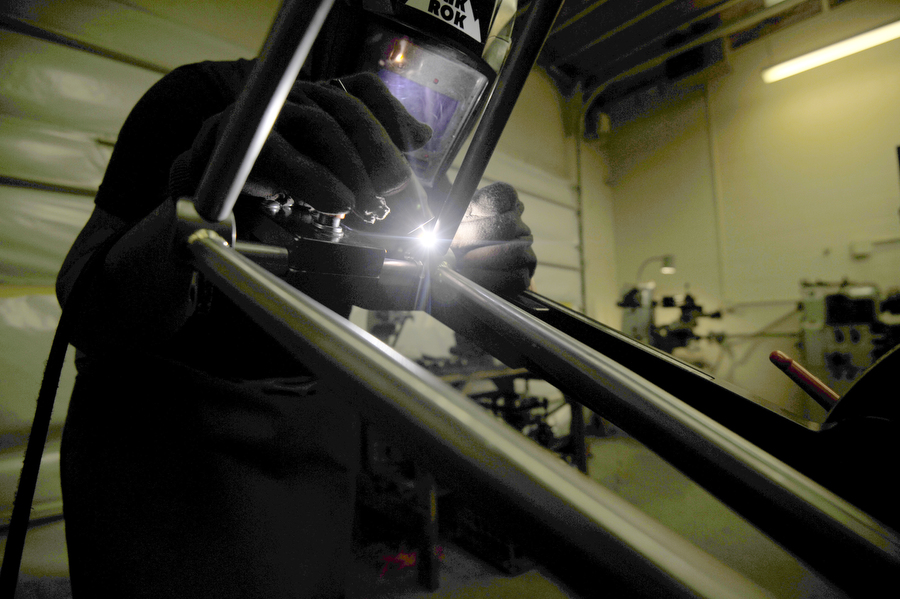
In doing so, Douville followed the “lean manufacturing” model based on a 1990 book about automobile manufacturing called The Machine That Changed the World. The authors, three MIT professors, were studying Japanese car companies who, at the time, were kicking Detroit’s proverbial ass.
Lean production lies somewhere between the preindustrial craft system of production (where one artisan creates a complete one-of-a-kind product one at a time) and Fordist mass production (where unskilled laborers perform single tasks along an assembly line, building standardized products with interchangeable parts). It is more scalable than the former while allowing for more flexibility than the latter.
The purpose of lean production, whose principles were first introduced by Toyota, is to eliminate seven muda, or wastes: inventory, overproduction, extra processing, motion, transport, defects, and waiting. (Stinner also likes to point out the environmental benefits of reducing waste.)
One of Toyota’s well-known innovations in assembly plants is called kanban, translated as “just in time.” The parts at each step of assembly are transported in containers that are then returned empty to the previous step. On the outside of the containers are color-coded cards that allow workers to communicate with each other. This system reduces inventories so that no parts are used until they are absolutely needed.
Bikes are a lot simpler than automobiles; Stinner’s assembly line merely consists of a bike builder, a fabricator, a welder, and a painter. Still, he follows a kanban system, and it makes a difference. Once an order is placed, his bike builder, Jeremy Platt, starts buying tubes and parts, depositing them in a Tupperware box for the customer. These boxes are labeled with colored stickers that indicate included parts, as well as those that are still missing. As raw materials cohere into a bicycle frame, each set of tubes goes through two quality-control checks — after they are cut and mitered and then again after they are welded.
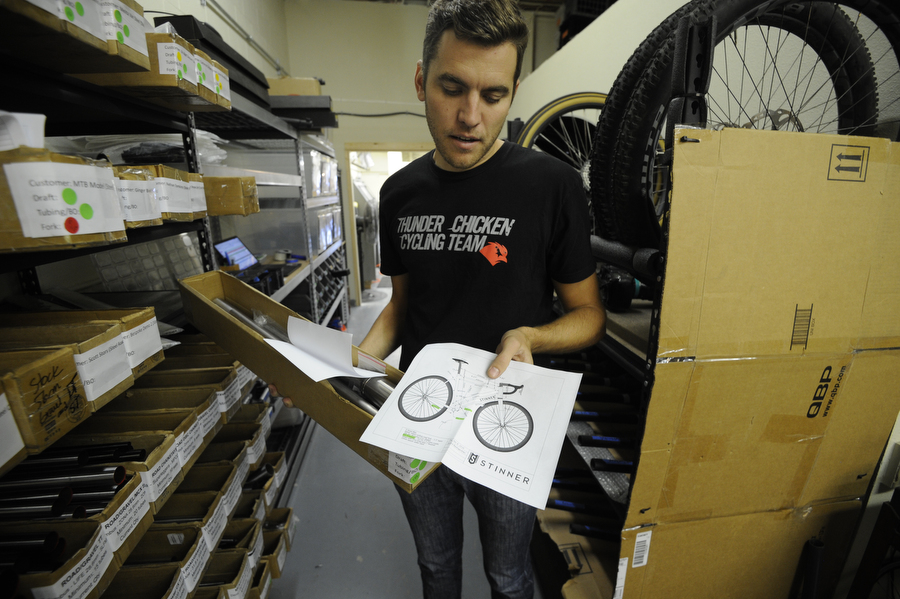
Stinner Frameworks can now present a bike to a customer within four weeks of an order (though they are only willing to promise eight). They are pumping out about one frame per work day. And with low inventories, they have the flexibility to quickly adapt their tooling to rapidly changing standards in the bike industry. For instance, when it became clear to Stinner that a new interface for connecting disc brake calipers to road bikes — called a flat mount — was taking over, he started building these mounts into his own bikes within weeks.
Although Stinner may have started out as a craftsperson, he is now a manufacturer with a sustainable growth model. Instead of building one-off bikes, he offers distinct models named after popular Santa Barbara cycling routes (Gibraltar, Romero, Refugio, Tunnel). Buyers can still order upgrades like custom paint or geometry, while Stinner can focus his energy on moving the business forward. As operations continue to smooth out, he’d like to develop new products such as a full-suspension mountain bike, a rig for off-road touring, and a commuter.
Style for Miles
When viewing Stinner’s steel and titanium frames up close, one is immediately struck by the congruence between his bicycles, his business model, and his personality: clean, lean, light, and deliberate. Save for special projects, Stinner chooses to weld his bikes. Rather, he hired Carlos Velazquez ��� who, Stinner humbly admits, is much more skilled than he is — away from an aerospace company to take over most of the welding, a process that requires no extra material and keeps down weight, maintaining an emphasis on performance. If welded joints are short on ornament, flaws are impossible to disguise.
Still, Stinner, whose stepfather is an architectural photographer, always understood the importance of aesthetics to branding. He was an early adopter of Instagram, grasping the social media platform’s ability to sell an experience along with a thing. It allowed him to pair close-ups of his bikes with photos of silhouetted cyclists climbing coastal mountains against backdrops of exploding California sunsets.
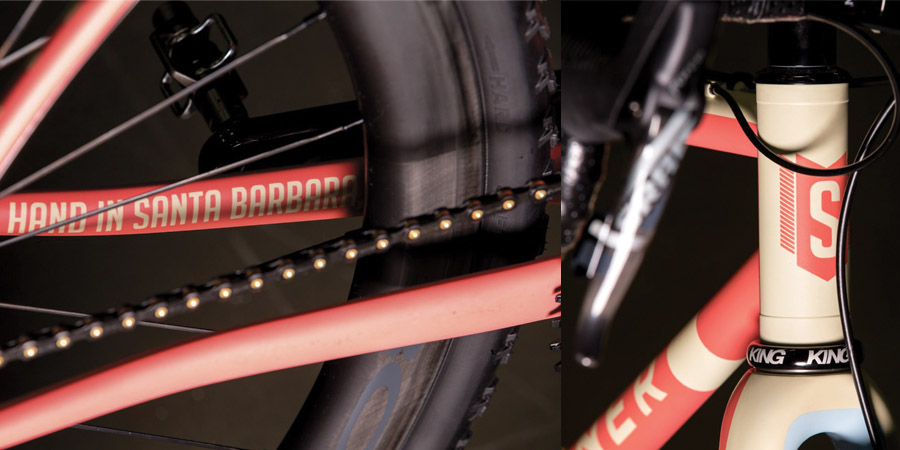
In order to cultivate a visual identity, Stinner reached out to Geoff McFetridge, an L.A.-based artist whose work you may recognize from ad campaigns for companies such as Nike and Intel. What you probably don’t know about McFetridge is that he’s a cycling fanatic who made sure his house and his studio were on opposite ends of Griffith Park so he’d have an excuse to ride his bike over Mount Hollywood every day.
Stinner proposed to build a run of bikes for the Mudfoot cyclocross racing team that McFetridge founded. The Canadian-born McFetridge, who cut his teeth applying graphics to snowboards, would design the finish on the bikes. McFetridge told me, “I approach bicycles the same way I would a stack of [skateboard] decks.” He described his designs for the Mudfoot bikes as “elegant doodles,” saying, “I don’t want you to have to be a cyclist to appreciate it.”
Like McFetridge, a new generation of bike consumers did not grow up watching the Giro d’Italia. They had entered the sport through the fixed-gear fad of the 2000s, popularized by urban bicycle couriers who were repurposing track bikes for street use. In fact, the link between Stinner and McFetridge was Matt Renfro, a longtime Santa Barbara resident who, in 2008 and 2009, ran an underground fixed-gear race series in the Funk Zone before he moved to Los Angeles and joined the Mudfoot team.
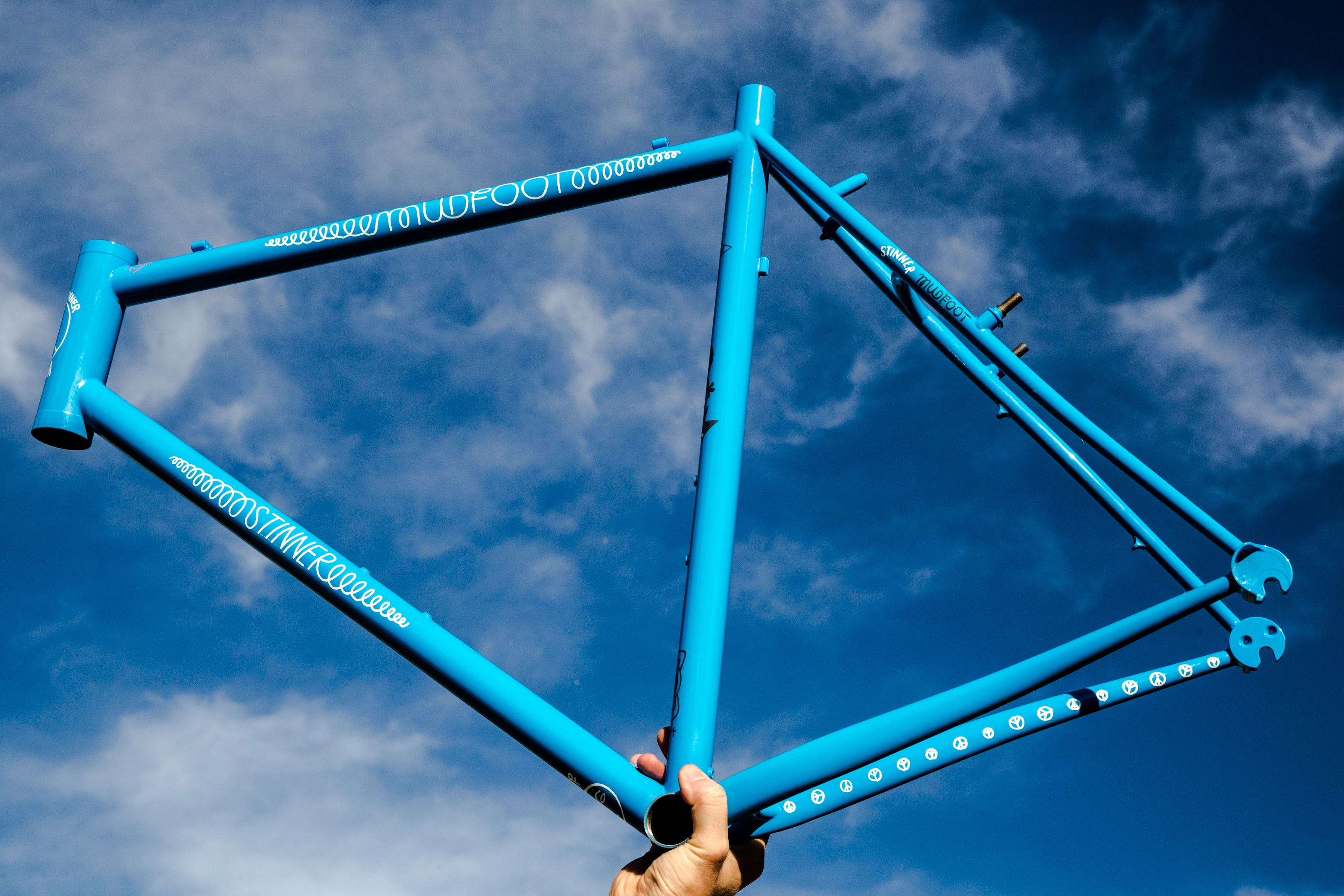
“The Mudfoot bikes were patient zero,” said James Bellerue, who is now Stinner’s in-house painter and continues a tradition of taking design references from outside cycling history.
The Mudfoot ecosystem would prove indispensable to the rise of Stinner. Another pair of members, the owners of Golden Saddle Cyclery in the Silver Lake neighborhood of Los Angeles, became early champions of the brand after one of them saw Stinner’s work at NAHBS and commissioned a bike for the Tour Divide Race, which runs along the continental divide from Banff, Alberta, to the Mexico-U.S. border.
For whatever reason, the Los Angeles area is short on established frame builders. Part of Stinner’s appeal was his proximity. “I really liked that he was pretty local and his work looked super clean, plus he was a rad dude,” Golden Saddle co-owner Ty Hathaway told me via email.
Brands such as Stinner and Golden Saddle, as well as other L.A.-area apparel and accessory makers, all became intertwined as cycling-specific avatars of the maker movement — and apparently radness. With blogs and social media, they began cultivating an audience for domestically produced, sustainably sourced, high-quality gear.
This audience has enabled Stinner to build partnerships with much bigger companies. Cycling brands (such as component maker SRAM) and lifestyle brands (such as Santa Barbara–based SeaVees) have both found marketing value in associating themselves with Stinner.
Even so, good marketing can’t overcome the quality of the product itself. Said Hathaway, “People really like being able to go to him and see things, touch things, and be more involved in the process.”
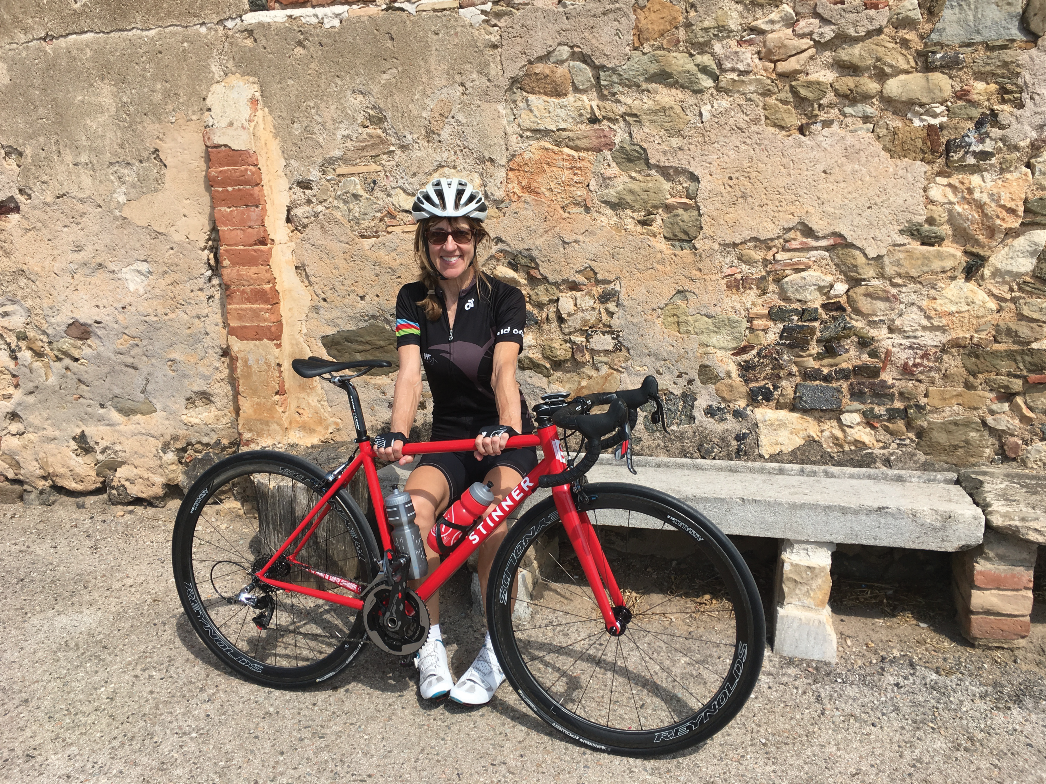
The Process
One December evening, I took an informal survey of the hundred or so preternaturally fit revelers munching on ramen noodles and pork belly prepared by Finch & Fork chef James Siao while swilling craft beer from Telegraph Brewery. We were in an industrial parking lot off Hollister Avenue, opposite the Santa Barbara airport at the workspace Stinner now shares with wheel builder John Jones, to celebrate the launch of Stinner Frameworks’ 2017 collection. Many of the people there were customers.
Ask the owners of a Stinner bike why they love it, and they may wax poetic about its ride quality. “Coolest thing on the descent,” said Brandon Baker, who races for the newly minted Stinner-sponsored racing team. “Favorite bike I’ve ever owned,” said Douville. “I’ve never been on a bike that fit so perfectly,” said Faulkner.
More than likely, though, customers will discuss the process of purchasing a Stinner — buying something made right here in Santa Barbara, having the opportunity to discuss their personal needs with the fabricators. Bolder customers will even drop by the shop to see their bicycle actually being made.
Such is the case with Santa Barbara resident Carmelo Gaeta, who owns two Stinners and is saving for a third. He said, “It’s like growing your own vegetables from seed.”
When hearing such reflections, this overly effete writer can’t help but recall Karl Marx’s concept of commodity fetishism, which suggests that the price tag affixed to a product obscures, among other things, the value of the labor that went into making it. The product thus attains a totemic quality that is completely detached from its material nature and the humans who shaped it. (According to the National Bicycle Dealers Association, most of those humans are in China or Taiwan. Around 99 percent of the bicycles sold in the United States are imported, primarily from those two locations.)
I’m not trying to tell you that Stinner Frameworks — an operation that sells boutique bicycle frames starting around $2,500 — is running some sort of socialist experiment. Much of this article has made the point that it’s a cold, hard business. But for all the preciousness of the maker movement, there is a real market for transparency in production, for locally produced goods, for understanding a thing for what it is.
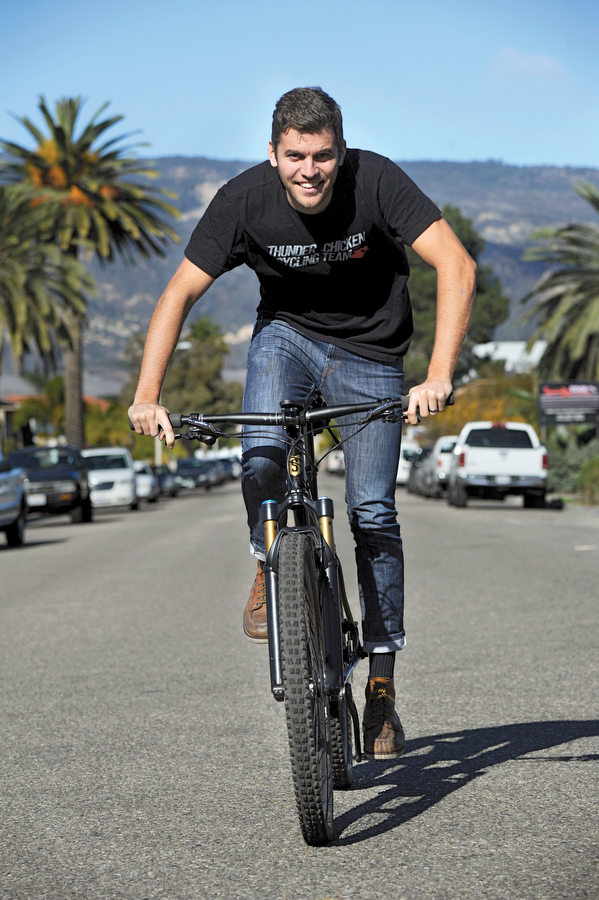
Stinner’s business depends on this market. And so does his ethos. He traces his own affinity for handiwork to the dominant male figure in his early life, his maternal grandfather, an engineer who immigrated from Germany to Canada and worked on the design of Alaskan oil pipelines before moving on to Lockheed Martin in San Jose. When he was growing up, Stinner said, his grandfather taught him, “You make your own stuff; you don’t buy it.”
As he walked me through his workspace, Stinner expressed just as much excitement about his machine tools as he did about his bikes. He scavenged and restored a number of them himself. Two large pieces of equipment, including his lathe, were salvaged from a foreclosed home. And he is currently resuscitating his latest acquisition, a Kearney & Trecker Model H that he scored for $300 at the flea market in La Conchita. This horizontal milling machine, which was built in 1942 and spent its early years on an aircraft carrier, is a hulking testament to the fact that some things are built to last.



